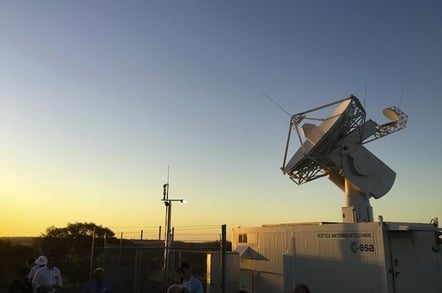European Space Agency lights up new Australian antenna
Perth's skies are polluted so ESA puts new sat-tracker in the hamlet of New Norcia

The European Space Agency (ESA) has flicked the switch on a new antenna in the West Australian town of New Norcia.
The new dish is located at an existing ESA facility that sports a 35-metre deep space tracking dish that's been used on big missions like Rosetta and Mars Express. But the agency is now keen on using New Norcia to keep an eye on newly-launched objects sent aloft from the ESA's spaceport in Kourou, French Guiana. The 35-metre 'scope is a little too clumsy for that job, hence the need for the nimbler 4.5 metre dish pressed into service yesterday.
The little dish can also “slave” the big dish. The ESA imagines that arrangement will be handy once the small dish locates an object, as it can then use the larger instrument to collect data at the higher rates its greater sensitivity permits.
The new dish replaces a predecessor in the Australian city of Perth, just 140 kms away but as befits a growing city a busy source of electromagnetic radiation. Recognising that its urban facility was becoming untenable but desirous of ongoing capacity for spotting recent launches, the ESA therefore created the new instrument at New Norcia.
The West Australian facility is part of the nine-location ESTRACK network, which operates in French Guiana, three locations in Spain, Belgium, Portugal, Argentina and Sweden, plus the Australian facility discussed here. ®








 User Center
User Center My Training Class
My Training Class Feedback
Feedback











